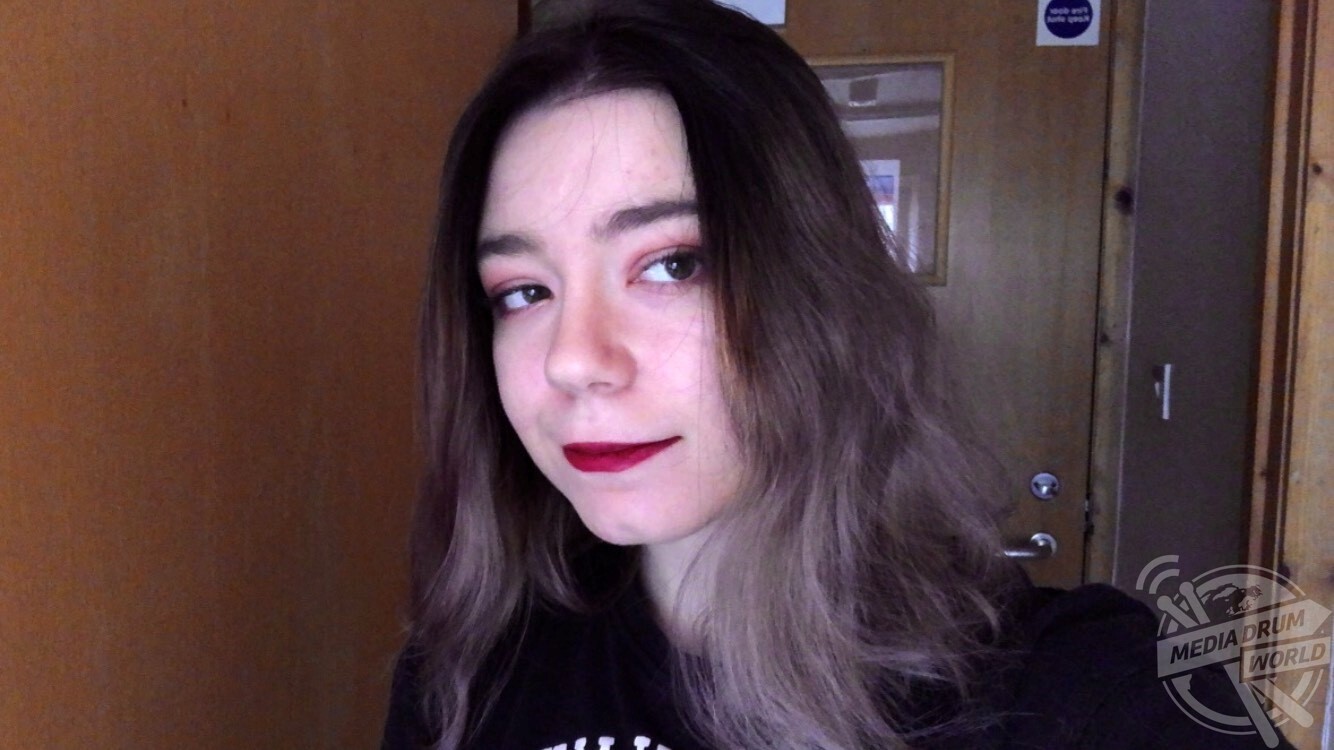By Rebecca Drew
THIS WOMAN was scared to look in the mirror after an allergic reaction to hair dye left her head looking like a FOOTBALL.
On January 6, 2020, psychology student, Valentina Nikolova (20) from Sofia, Bulgaria, decided to dye her hair half black at a salon after having used temporary dyes and dying her hair purple with a permanent dye before with no problems.
Within 24 hours of having her hair dyed, Valentina noticed her scalp had started to itch which got increasingly worse and made her feel like she was ‘in hell.’ Her hairdresser had told her that it was normal for the scalp to itch after dying the hair, so she didn’t worry too much. The next day when she woke up, Valentina’s head had swollen into a ball shape and she struggled to open her eyes.

Looking into the mirror was a scary experience for her and looking at her reflection was an anxiety inducing experience. Valentina went to an allergist where she was given a corticosteroid injection and prescribed antihistamines to take down the swelling.
After four days, the swelling started to go down but Valentina still suffered from itching and the skin on her scalp started to peel off as the skin regenerated. Every time she showered, the itching on her head increased which was painful.
Valentina wore hoodies and sunglasses to conceal her allergic reaction from other people. She did not do a patch test before she dyed her hair but is sharing her story to stress the importance of doing so – and says she will never dye her hair with permanent dyes containing PPD again.

“It wasn’t the first time I have used permanent hair dye, but it was the first time I have used a black one,” said Valentina.
“I had used permanent purple hair dye before and I didn’t have any allergic reaction. I have also used temporary hair dyes without having an allergic reaction.
“During the first twenty-four hours after dying my hair, my scalp started itching. I went to bed and the next day the top half of my head was swollen.

“On the second day the swelling got to the lower half of my head and my eyes were halfway closed. My head looked like a ball – you could say a football or something similar, it just had a very spherical shape.
“I was really scared and anxiety crept in on me when I first saw myself in the mirror. I couldn’t believe it was me.
“When it started to itch, I was in hell. You know when you get sunburnt and every movement is painful? It was worse than that.

“I think it was my fourth day after having the allergic reaction, when my face and head weren’t swollen but the outermost layer of skin on my scalp was starting to fall off, because my skin was regenerating.
“That’s the day when I got out of the shower and the pain and itching were so bad that I got really desperate and cried a lot. The pain and itching were only there after washing my hair.
“I went to an allergist and they gave me a corticosteroid injection and also prescribed me some medicine.”

Valentina suffered an allergic reaction to a chemical found in most hair dyes called paraphenylenediamine (PPD).
Many permanent and some semi-permanent hair dyes contain chemical PPD, which is known as an irritant and allergen. Dyes containing PPD are usually perfectly safe to use.
“I didn’t do a patch test and I advise people to do patch tests before dying their hair in order to avoid this,” said Valentina.

“I would never dye my hair black again, but I would with temporary hair dyes.
“If you have a reaction and are self-conscious about it like I was, wear a hoodie and glasses if you don’t want people to see you like this. Use baby hair shampoo so that you do not irritate your skin.
“Go to the doctors immediately after you realise you are having an allergic reaction and take the medicine they prescribe you. Do not panic, because everything will be okay, and it is only temporary.

“Please, do a patch test before dying your hair, no matter what colour it is and no matter if it is temporary or permanent.
“Having a dye of high quality does not mean that you won’t have an allergic reaction. Be smart.”






